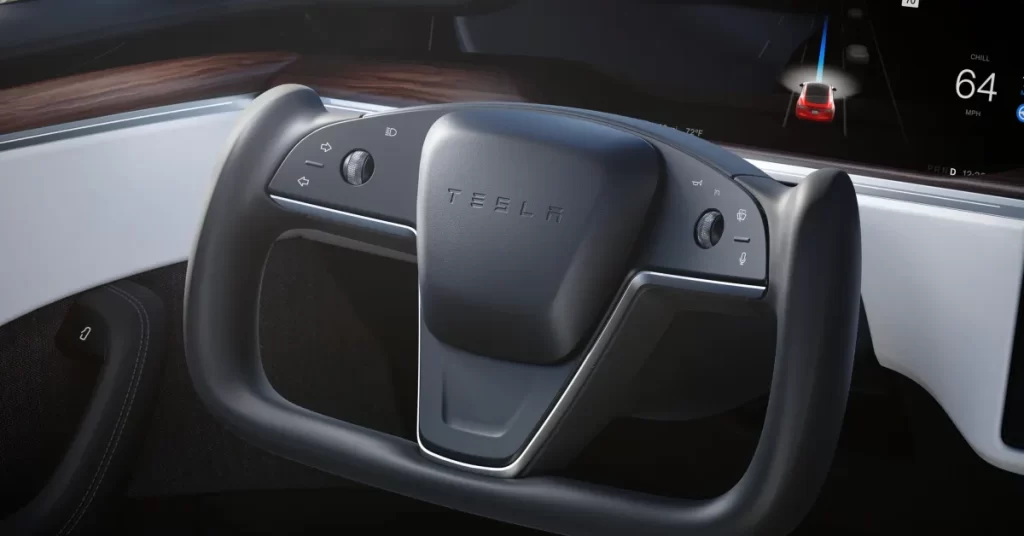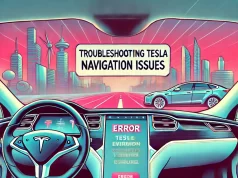One of the common issues that Tesla owners have reported is the horn not working properly or at all.
This can be a safety hazard, especially in situations where the driver needs to alert other road users or pedestrians of their presence or intention.
How to Fix Tesla Horn Not Working Issue?

#1. Check for Error Messages or Warnings
Use your Tesla’s touchscreen display to check for any error messages or warnings related to the horn system.
If there are any notifications or alerts, note down the specific details and contact Tesla customer support or visit a service center for further assistance.
#2. Check the Horn Relay
Locate the horn relay in your Tesla’s fuse box or relay panel. A faulty or malfunctioning relay can prevent the horn from working properly.
Try swapping the horn relay with a similar relay in the panel to see if that resolves the issue.
If the horn starts working after the swap, it indicates a faulty relay that needs to be replaced.
#3. Check for Water or Moisture
Inspect the horn for any signs of water or moisture damage. Excessive exposure to water or condensation can affect the functionality of the horn. Dry the horn thoroughly or replace it if necessary.
#4. Verify Steering Wheel Clock Spring
The clock spring, located behind the steering wheel, enables the electrical connection between the horn button and the horn itself.
If the clock spring is damaged or faulty, it can prevent the horn from working. Professional assistance is recommended for inspecting and replacing the clock spring.
#5. Test the Horn
Disconnect the horn from its wiring harness and test it separately. Apply direct power from a battery or a power source to see if the horn itself is functional.
If the horn does not produce any sound when powered separately, it may be defective and require replacement. Reset the Tesla’s Electrical System.
Sometimes, an electrical glitch can cause the horn to malfunction. Resetting Tesla’s electrical system can help resolve minor issues.
To do this, turn off the car, exit, and close all doors. Wait for a few minutes, then re-enter the car, and start it up again. Test the horn to see if it has started working.
#6. Disconnected horn cables
The horn cables are located under the front bumper of the Tesla car. They connect the horn to the power source and the steering wheel.
Sometimes, these cables can get loose or disconnected due to vibrations, impacts, or corrosion.
To fix this, the driver can try to reconnect the cables by accessing them from underneath the car or by removing the front bumper.
If the cables are damaged, they may need to be replaced by a professional.
#7. Replace the Blown horn fuse
The horn fuse is a small device that protects the horn circuit from overloading or short-circuiting.
It is located in the fuse box under the hood of the Tesla car. If the fuse is blown, it will prevent the horn from working.
To check this, the driver can use a multimeter or a test light to measure the voltage across the fuse.
If there is no voltage, the fuse is blown and needs to be replaced with a new one of the same rating.
#8. Change the Faulty horn switch
The horn switch is a part of the steering wheel that activates the horn when pressed. It can wear out over time or get damaged by water, dust, or debris.
To test this, the driver can try to press different parts of the steering wheel where the horn symbols are imprinted.
If some parts work and some don’t, it means that the switch is faulty and needs to be repaired or replaced by a professional.
Alternatively, the driver can also use the Tesla app to test the high-tone and low-tone horns separately.
#9. Dry out the horn
The horn itself can also malfunction due to physical damage or exposure to water.
The horn is usually mounted behind the front grille of the Tesla car. It can get dented, cracked, or broken by collisions, debris, or vandalism.
It can also get wet by driving through deep water, heavy rain, or snow. This can affect its sound quality or make it stop working altogether.
To fix this, the driver can try to dry out the horn with a hair dryer or replace it with a new one.
These are some of the common causes and solutions for a Tesla horn not working.
However, there may be other factors that affect the horn function, such as software glitches, wiring issues, or relay problems.
Therefore, it is advisable to consult a Tesla service center or a qualified mechanic if the problem persists or worsens.
Why is Tesla Horn Not Working?
#1. Faulty horn switch
The horn switch is located on the steering wheel and is activated by pressing it. Sometimes, the switch can malfunction or get damaged, resulting in the horn not working.
This can be checked by using the voice control button on the steering wheel, which should also activate the horn.
If the voice control button works but the horn switch does not, then the switch is likely the culprit. The solution is to replace the horn switch, which can be done by a Tesla service center or a qualified mechanic.
#2. Faulty horn assembly
The horn assembly consists of two horns, a high tone, and a low tone, that are located behind the front bumper.
Sometimes, one or both of the horns can fail or get damaged, resulting in a weak or no sound.
This can be checked by using the Tesla app on a smartphone, which has a horn button that should activate both horns.
If the app does not produce any sound or only one tone, then the horn assembly is likely the problem. The solution is to replace the horn assembly, which can also be done by a Tesla service center or a qualified mechanic.
#3. Water damage
The horn assembly can also get damaged by water exposure, especially if the vehicle has driven through a large amount of water or has been exposed to heavy rain or snow.
Water can cause corrosion or short circuits in the horn wiring or connectors, resulting in the horn not working.
This can be checked by inspecting the horn assembly for any signs of water damage, such as rust, discoloration, or loose connections.
The solution is to dry out the horn assembly and replace any damaged parts, which can be done by a Tesla service center or a qualified mechanic.
#4. Software glitch
Sometimes, the horn problem can be caused by a software glitch in the vehicle’s computer system, which controls various functions and features of the car.
This can happen due to a bug, an update, or a reset of the system.
This can be checked by rebooting the infotainment computer, which can be done by pressing and holding both steering wheel scroll wheels for about 10 seconds until the screen goes black and then restarts.
If this does not fix the problem, then another option is to perform a factory reset of the system, which can be done by going to Settings > Service & Reset > Factory Reset.
However, this will erase all personal data and settings from the system, so it should be done with caution and as a last resort.
#5. Blown fuse
The fuse is a small device that protects the electrical circuit from overloading or shorting. If the fuse blows, it will cut off the power to the horn and prevent it from working.
This can be checked by locating the fuse box under the hood or in the trunk and looking for a fuse labeled HORN or something similar.
If the fuse is blown, it will have a broken metal wire inside or a burnt mark on it. The solution is to replace the fuse with a new one of the same rating.
#6. Faulty relay
The relay is an electrical device that switches on or off the power to the horn when the horn switch is pressed.
If the relay is faulty, it will not send or receive the signal from the switch and cause the horn not to work.
This can be checked by locating the relay box under the hood or in the trunk and looking for a relay labeled HORN or something similar.
If the relay is faulty, it will make a clicking noise when the switch is pressed or not make any noise at all. The solution is to replace the relay with a new one of the same type.
#7. Damaged wire
The wire is an electrical conductor that connects the horn switch, relay, fuse, and horn assembly together.
If any part of the wire is damaged, such as cut, frayed, corroded, or loose, it will interrupt or reduce the current flow to the horn and cause it not to work.
This can be checked by inspecting the wire for any visible signs of damage along its length and at its connections.
The solution is to repair or replace any damaged wire with a new one of the same gauge.
I hope this information was helpful and informative for you. If you have any other questions or feedback, please feel free to ask me.




